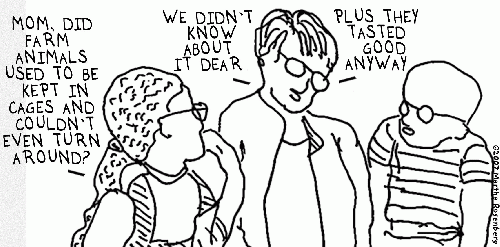Many who do not remember the 2003 SARS outbreak ignore the animal origins of such viruses which are called "zoonotic." Wet markets in which cats, dogs, birds, wild mammals and more are squeezed together and slaughtered on site explains the "jump" of a virus from one species to another including to humans.
Now, this week in Texas, we are seeing bird flu (which cost the lives of over 50 million "euthanized" birds) jumping to cows and to humans. Watch this space.
"The most plausible source of mammal infection"appears to be close contact with infected birds, including their ingestion," reads a paper in the journal Emerging Infectious Diseases. "Continuous surveillance is essential to mitigate the risk for a global pandemic."
Such viral outbreaks are directly linked to the "intensive confinement of animals" in factory farms, according to the Journal of Public Health Policy.
The novel H1N1 virus (originally called swine flu until hog farmers objected to the bad PR) responsible for the 2009 - 2010 pandemic, was a new and ominous combination of five viruses--North American swine flu, North American avian flu, two swine flu viruses from in Asia and Europe and a human flu virus.
Five months after its identification, H1N1 had spread to 43 countries according to the World Health Organization (WHO), which declared it a pandemic in June 2009. Between 151,700 and 575,400 people died worldwide, according to the CDC.
In 1997, a strain of avian flu called H5N1 surfaced in Hong Kong, and for eight years had much of the world fearing a pandemic. Like H1N1, H5N1 was novel pathogen never before encountered with clear animal/zoonotic origins. By 2004, H5N1 had spread to more than 50 countries in Asia, Europe, the Middle East and Africa.
(Note: You can view every article as one long page if you sign up as an Advocate Member, or higher).






